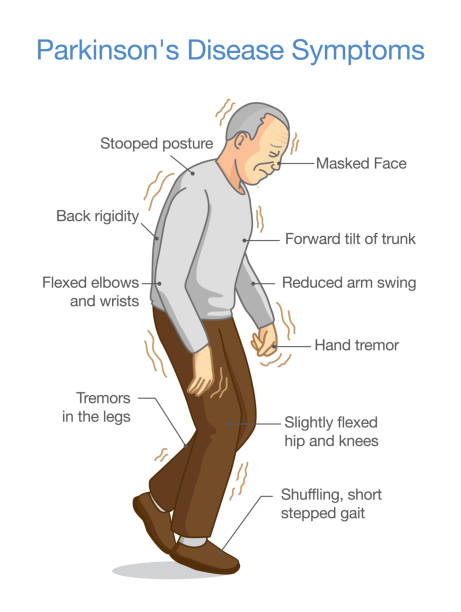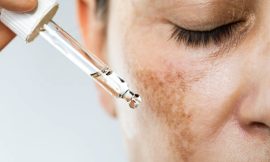Introduction to Parkinson’s Disease
Parkinson’s disease is a progressive, chronic neurological disorder that impairs movement and motor control. It happens when some nerve cells in the brain, specifically those that produce dopamine, become damaged or die. Dopamine is a chemical messenger important for smooth and coordinated muscle movement. When dopamine levels decrease, people start to develop the typical motor symptoms of the disease.
Parkinson’s disease usually arises in individuals above 60 years old, although some may have the condition at a younger age as well. The disease is found to be multifactorial and involves genetic and environmental components. Although there isn’t any existing cure, certain medications are helpful in controlling the symptoms and improving the quality of life.
Role of Medications such as Syndopa Plus
Pharmacological therapy is the cornerstone of Parkinson’s disease treatment. Syndopa Plus, a combination of Levodopa and carbidogapa, is perhaps the most widely prescribed drug. Levodopa is metabolised to dopamine in the brain, which helps to replace depleted levels and relieve motor symptoms. Carbidopa inhibits the premature conversion of Levodopa en route to the brain, thus enhancing its efficacy and minimising side effects such as nausea.
Syndopa Plus is usually the standard against which others are compared for treating symptoms of Parkinson’s. It may drastically enhance mobility, alleviate tremor, and treat rigidity and bradykinesia (slow movement). Yet with extended use come motor fluctuations and dyskinesia as possible complications, so the dosage should be regulated carefully by health care providers.
Common Symptoms of Parkinson’s Disease
Parkinson’s disease presents itself through a variety of motor and non-motor symptoms. How quickly it progresses and how severe it will be vary between individuals, but some classic signs are always present:
1. Tremors
Tremors, especially a resting tremor in the hands, fingers, or arms, are usually one of the first and most recognisable signs. These shaking movements that occur involuntarily tend to diminish during sleep or intentional movement.
2. Bradykinesia
Bradykinesia or slowness of movement may be time-consuming and make daily activities cumbersome. Individuals can experience a decrease in the range of motion, facial movements, or arm swing while walking.
3. Muscle Rigidity
Stiffness or rigidity of the muscles may happen to any body region, usually causing distress and limiting movement. This symptom can predispose individuals to a shuffling gait and postural problems.
4. Postural Instability
As the condition advances, the person can experience balance problems and is more likely to fall. Instability of posture is one of the diagnostic indicators in advanced stages of Parkinson’s.
5. Speech and Writing Changes
Speech becomes soft, slurred, or rapid, and handwriting becomes altered (micrographia) frequently. These are secondary to motor impairment, which causes coordination loss.
6. Non-Motor Symptoms
Apart from physical symptoms, most patients also develop non-motor complications like depression, sleep disorders, constipation, and cognitive impairment. These symptoms can significantly affect the overall health of the patient and need to be addressed with proper care.
Diagnostic Approaches
There is no specific laboratory test for parkinson’s disease. Diagnosis is mainly clinical, relying on medical history, symptoms, and neurological examination. Imaging tests like MRI or DaTscan may occasionally be employed to exclude other conditions or confirm a diagnosis.
Early diagnosis is important in controlling the disease properly. Doctors tend to employ the “Unified Parkinson’s Disease Rating Scale (UPDRS)” to evaluate the severity and progression of symptoms over time.
Treatment Alternatives Beyond Medication
Although drugs such as Syndopa Plus continue to be the first line of treatment, various other therapies are employed to control Parkinson’s disease.
1. Physical Therapy
Regular exercise and physiotherapy with guidance can promote mobility, flexibility, and balance. Specific exercises can target gait impairment and posture to minimise the risk of falls.
2. Occupational Therapy
Occupational therapists assist patients in changing their living conditions and daily routines to ensure they remain independent and safe.
3. Speech Therapy
Speech-language pathologists can help with vocal strength and clarity and safe swallowing strategies.
4. Surgical Options
In late stages or when drugs lose efficacy, surgical interventions such as Deep Brain Stimulation (DBS) can be contemplated. DBS is achieved through the implantation of electrodes in certain parts of the brain to regulate aberrant signals.
5. Dietary Management
An equilibrious diet with high fibre and fluid content is usually prescribed, particularly to counteract constipation. Protein levels might have to be modified in certain situations, since they can hamper Levodopa absorption.
Lifestyle Adjustments and Support
Medical treatment is not the only way to manage Parkinson’s disease. Lifestyle changes and support systems are also crucial to sustaining a high quality of life. Promoting mental health treatment, social contact, and stress reduction methods such as mindfulness or yoga can benefit emotional well-being.
Support groups are also an important platform for patients and caregivers to exchange information, coping mechanisms, and emotional support. Education empowers patients to make informed choices and self-advocate for their own care.
Takeaway
Learning about Parkinson’s disease includes recognizing its wide range of symptoms and the treatment methods available. Although drugs like Syndopa Plus provide symptomatic relief for most motor symptoms, multidisciplinary management of the disease may often be necessary.
Since there is no cure, early detection and active management are the most effective ways of enhancing quality of life. Ongoing research and development in the treatment of Parkinson’s disease continues to provide hope for victims.



